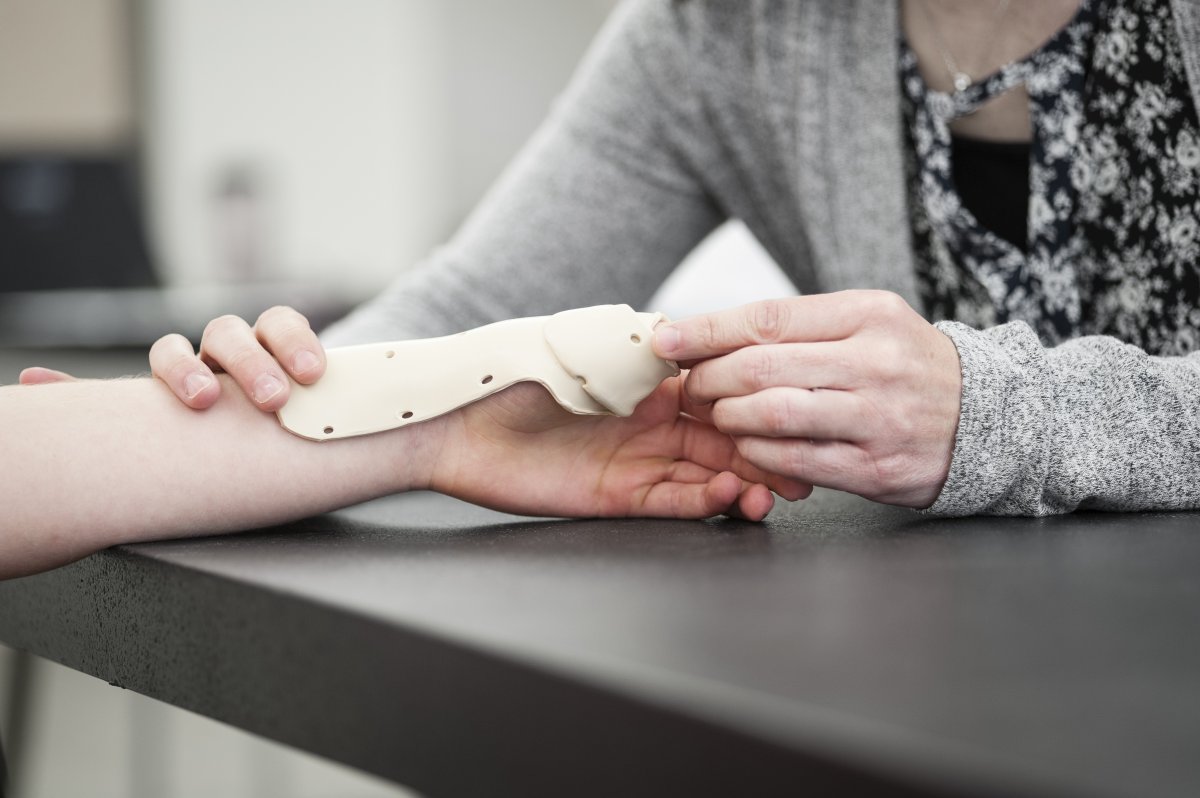What is Hand Therapy?
Hand therapy is a type of rehabilitation performed by an occupational or physical therapist on patients with conditions affecting the hands and upper extremities. Our certified hand therapists offer a high degree of specialization that requires continuing education and, often, advanced certification.
Who is a candidate for hand therapy?
Patients who are candidates for hand therapy may have been affected by an accident or trauma leaving them with wounds, scars, burns, injured tendons or nerves, fractures, or even amputations of the fingers, hands, or arms. Others include patients who suffer from the effects of conditions such as carpal tunnel syndrome and tennis elbow, as well as from such chronic problems as arthritis or a neurologic condition, like stroke.
What does hand therapy provide?
Preventive, non-operative or conservative treatment
- Management of acute or chronic pain
- Desensitization following nerve injury or trauma
- Sensory re-education after nerve injury
- Design and implementation of home exercise programs to increase motion, dexterity, and/or strength
- Splint fabrication for prevention or correction of injury
- Training in the performance of daily life skills through adapted methods and equipment
- Conditioning prior to returning to work
Postoperative rehabilitation
- Management of open or sutured wounds (prevention of infection and assistance in healing)
- Control of hypertrophic (raised and/or swollen) or hypersensitive scars
- Reduction of swelling
- Fabrication of orthoses to protect surgery or increase movement
- Instruction in home exercise program
Industry consultation
Your hand therapist may consult with various industries establishing preventive programs for workers with upper extremity symptoms. Hand therapists recommend modifications of workstations and alternative work methods to help ensure healthy workstyles of all employees.
What to expect
Although each patient’s treatment plan will be different, most patients can expect to be in therapy 1-2 times per week for 4-6 weeks. During the initial evaluation, goals will be set by you and your therapist. Then, a treatment plan will be designed to help you achieve the overall highest levels of function with the affected upper extremity. Therapy may consist of splinting, range of motion exercises, strengthening, desensitization, patient education, massage, pain and swelling management and joint mobilization.
Individualized treatment plans may include:
- Pre- and post-operative rehabilitation
- Range of motion
- Strengthening
- Endurance activities
- Fine motor dexterity
- Scar management
- Desensitization
- Edema control
- Home exercise program
- Physical agent modalities
- Customized splint fabrication
Commonly Treated Conditions
- Work-and-sports-related injuries
- Carpal tunnel syndrome
- Cubital tunnel syndrome
- Trigger finger
- Inflammatory disorders
- Dislocations
- Crush injuries
- Tumors and Ganglion cysts
- Tennis and golf elbow
- Shoulder pathologies
- Frozen shoulder
- Arthroscopy
- Rotator cuff repair
- Tendon and nerve injuries
- Wrist sprains and strains
- Hand/Wrist fractures
- Hand/Wrist/Elbow tendonitis
- Congenital hand conditions
- Nerve injuries of the hand, wrist, elbow
- Trauma (i.e. amputations, crush injuries)
- Post-surgical limitations in pain, weakness and range of motion
- Cerebral palsy
- Nerve and tendon transfers
- Tendon lacerations and repairs
